A couple of years ago, when Samuel Adams started hawking their ‘West Coast Style’ Rebel IPA, I was intrigued. Here I was a California-born living in Samuel Adams country on the East Coast. What could be a better beer to drink? If only one could solve the riddle of what ‘west coast style’ really meant. Beer aficionados touted its hoppier hops, but to a mere commoner like me, it was just a simple IPA. As we pointed Sea Rose up along the west coast of the Peloponnese peninsula, I wasn’t going to let a catchy marketing cliche get in the way of appreciating this region’s unique west coast style. If it meant a little beer tasting along the way, all the better!
An easy 7 mile hop up the coast from Methoni brought us to the protected inland waters of Navarino Bay, with the village of Pylos on the southern shore comprising the center of commerce. At one point, Pylos was a frequent stop on the car ferry route, and the government had invested in a robust ferry landing for the anticipated visitor traffic. But more recently, with other ports garnering the attention of the ferry operators, the town was left with a sizable hunk of concrete for visiting private boats like ours to tie to. We in fact had two leftover government projects to choose from for dockage. Across the harbor from the town quay was Pylos Marina, with a large seawall protecting five long finger piers inside. Here was a chance to dock at a bonafide marina for the attractive rate of 0 euros/meter. Try to match that Nantucket Boat Basin! But alas, it has sat unfinished since 1995, and was full of abandoned and derelict boats, and others clinging to life support. So it was the town quay for us.
Lest we be bored, it was no less crowded or entertaining at the town quay. A heavy steel-hulled German sailboat backed in next to us. Any anxiety we felt quickly disappeared as our compliments on their colorfully painted hull of flower petals led to swapping stories of past sailing triestes. The captain then borrowed the water hose a neighboring boat had run from the dock spigot, in an effort to fill their tanks of this precious commodity in the sun-drenched Med. He encouraged us to do the same, after he finished first with a lavish shower off of their stern. As he lazily swirled the hose nozzle above his head like a drunken heathen, up roared a dilapidated sedan, stopping abruptly with one wheel up over the curb directly in front of their boat. Out popped a heavy-set and heavily angered man. He wasted no time making his anger known to the captain, and by proximity, all of the rest of us at the quay. He pulled out all manner of couped up hatred towards elitist boat owners, and German ones in particular. The crew’s apologies were no match for a man trying to support his rag-tag family back in the sedan on meager returns for a water service for visiting yachties. He even came back later, this time on a weathered vespa, to spew more discontent on the captain. I shutter to think what would have happened if he had come moments later when the hose had been passed to our hands. Note for the journal: Don’t cheat the struggling livelihoods of those around you!
The large parking area, left with so much extra capacity, was a boon to the little town of Pylos. As darkness fell, and the European-esque dining hour approached, all the parking spots were filled with young couples, families with small children, and a few of us 4.0 types. And it was a good thing as this village was bursting at the seams with dining options. Not surprisingly, modern Pylos, with its geometric central village square, surrounded by retail stores connected by arches and a colonnade that invited strolling and espresso sipping, was designed by the French, after their forces helped liberate Greece in the early 1800’s. We found a quaint taverna literally at the water’s edge, with tables spaced barely enough to pass the 1.5m Covid protocol, while still moving patrons through at a brisk pace. This was a rare paradise, unlikely to repeat itself in normal times. The views were spectacular, the Covid counts were low, the languages overheard were everything but English, and the pork souvlaki was teasing me to apply for permanent residency.
One of the attractions of Pylos, besides its gastronomic delights, was the proximity to the ancient site of Olympia. All we needed was a rental car. After visiting the one and only little marine store in town, whose proprietor was eager to share a bottle of his homemade olive oil just for the courtesy of stopping in, we found the one and only little car rental office next door. If it wasn’t a family connection, it sure had the markings of a budding love affair between proprietors, the way he playfully bantered back and forth to introduce me to her.
We had been advised to arrive at the grounds of Ancient Olympia as close to opening time as possible. It was surely nice to be able to gawk at the sights without elbowing your way to the front of the crowds. Equally, the relief from the mid-day heat avoided the awkwardness of Karen and I turning into beef jerky for future explorers. Olympia, as the name implies, was the home of the original Olympic games, which started remarkably back in the 8th century BCE. The grounds consisted of extensive training areas, with a lengthy stadium acting as the center showpiece, together with temples to Zeus and Hera that would tower over us had it not been for either an earthquake or several tsunamis in 551 BCE – scientists are still trying to figure that one out. Despite its deep historical roots, Olympia stays connected to the present by being the origin point for the Olympic flame, as it starts its journey from Greece to the latest site of the modern-day Olympic Games.
In addition to Olympia, a visit to this coastline of the Peloponnese peninsula is not complete without a visit to Nestor’s Palace, one of the best preserved Greek Mycenaean sites. While we visited, archaeologists were actively working the grounds with buckets full of tiny brushes and scoops the size of teaspoons. This interplay between tourist and scientist was made possible by an imposing suspended structure over the site, allowing Karen and I to stare down with a birds eye view of the remains, a unique perspective that necessitates a bow to the Greek government for their deep investment in the arts and humanities.
Returning our car in Pylos required us to leave the key with the marine store man, with the hope that he would pass it along to his love interest the next day. We approached the dock with a skip in our step after a full day of Greek discovery, only to find that the wind had shifted, pushing Sea Rose’s stern within a hair’s width of the concrete sea wall. We shifted into a form of fight-or-flight mode, with me racing to the bow to take up on the anchor while Karen fired up the engine. Meanwhile, a casual wave from the Italian boat next to us made us aware of the fact that panic was unnecessary. In our absence, as the winds had built, they had noticed Sea Rose sliding astern. They had moved our fenders for better protection, and had tied a spring line to their boat, effectively saving our boat from certain damage. A bottle of wine passed to them, with hand gestures to make up for the gap in language, seemed paltry and trite. We could only hope to have an opportunity to pay the generous aid forward for a future boater.
With safety compromised at the town quay, we dropped lines and headed out into the harbor, where we had seen another boat anchor the previous day. If it was going to be rolly and shifty winds, I’d much rather be on an anchor than tied to a dock. Trying to read the color of the water for signs of anchor-happy sand, we tried a section of lime green. It wasn’t the avocado green we had trusted throughout the summer, but darkness was coming soon. Going overboard with my mask, I found the lime green was all craggy rock – the kind of craggy that either doesn’t hold an anchor at all, or holds it so well you have to cut it loose. Following Karen’s hand gestures on other possible ‘green zones’, I swam away in earnest, continuing to find false hope until a tiny section of sand appeared barely larger than the anchor itself. Despite our best efforts, the anchor would not dig in, likely due to a layer of rock just under the sand. We resolved to keep a close on eye on the weather overnight and set multiple anchor drag alarms onboard.
It wasn’t a Ritz-Carleton sleep experience, but in the morning, the winds had eased, tempting us to set off right away to the northern part of Navarino Bay. We had heard from other boaters at the town quay about a beautiful lagoon and a hike to Nestor’s Cave. The admission price involved finding space to anchor on a narrow sand shelf off the beach – too close and you’d risk swinging around onto the beach itself, too far and you’d run out of anchor rode in the depths. We threaded the needle successfully, and promptly dinghied ashore to discover the sights. At Voidokoilia beach, a hard-to-pronounce name imported I’m quite certain from their Croatian neighbors to the north, summer tourists lounged on the beach under colorful umbrellas, giving momentary respite from the oppressive heat. Parents watched carefully over their young swimming offspring, especially after a kerfuffle earlier when two teenagers swam beyond the sand shelf and fought to get back against a building offshore breeze, leading several adults to grab floaties and run into the water to rescue them – any parent’s worst nightmare.
Our first destination was the remains of a castle perched precariously on the bluff above the beach. There were plenty of other couples on the trail, but I soon noticed that they were all substantially younger than us. Combined with the repeated warning signs of loose stones and closed entrances, we debated turning around. In the end, we decided this was the Greek government’s way of saying, “Hey, come and go as you wish, but if you hurt yourself, don’t come blaming us!”
On the backside of the castle, the trail descended some of the trickiest terrain I’ve ever hiked on, with paltry loose wire cables at shin-height keeping you from tumbling off the trail and over a ledge into the sea. Old olive trees with their branches crossing the shoulder-width path, forced you to lean out and remember the ledge was in fact still there, with crashing white water a 100 feet below. The young and the innocent negotiated these obstacles like flying monkeys, while we, the cursed, after living more years and witnessing more tragedy, were left to descend at an embarrassing crawl.
The slower pace did afford us time to examine the lagoon unfolding below. Cut into a perfect semi-circle, with ocean waves breaking at the entrance and wrapping around with such perfect symmetry, we were once again astonished at the beauty of Mother Nature’s hand. With the perfection of an engineer and the practicalities of a Roman amphitheater, each visitor was offered an exquisite front row seat to summer fun.
Back onboard Sea Rose, after so many visual delights, a simple dinner was in order – barbecued sausages and a refreshing beet and feta salad. Tomorrow we would leave Navarino Bay behind, after four splendid days, for a full-day’s passage north to Zakinthyos, marking the end of our Peloponnese experience, and a second chance to discover the Ionian islands.

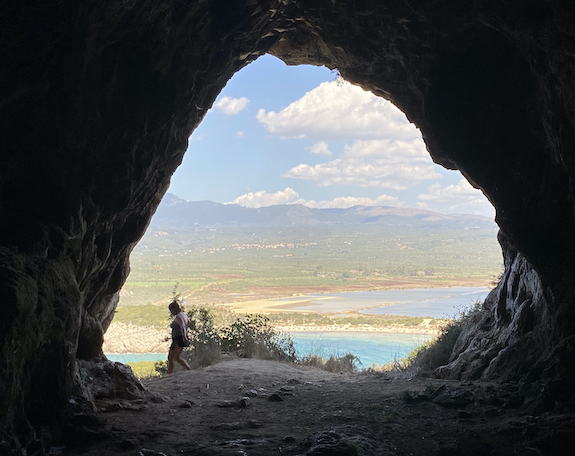
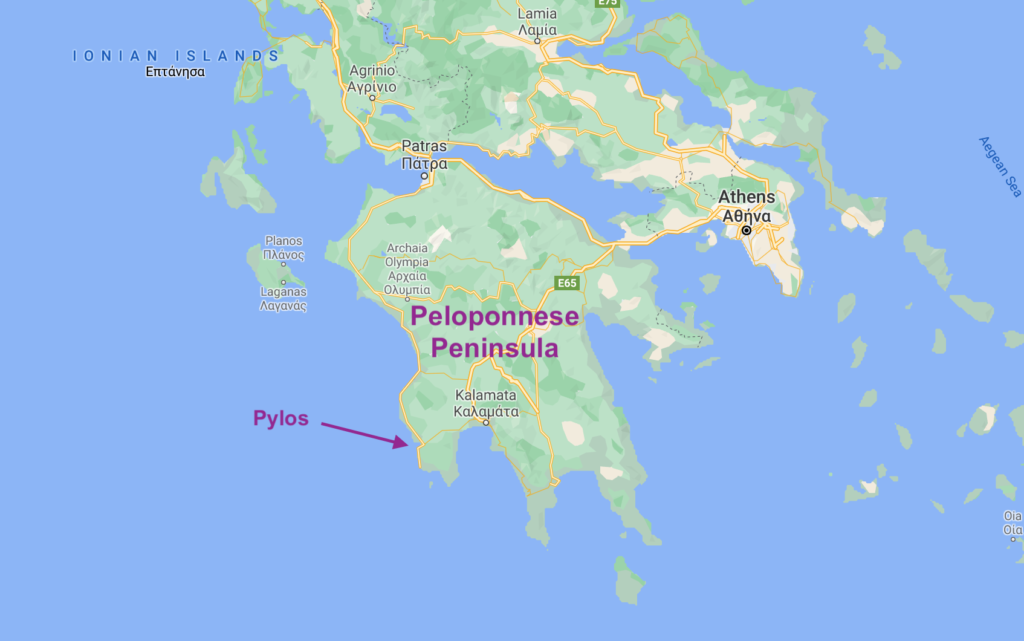
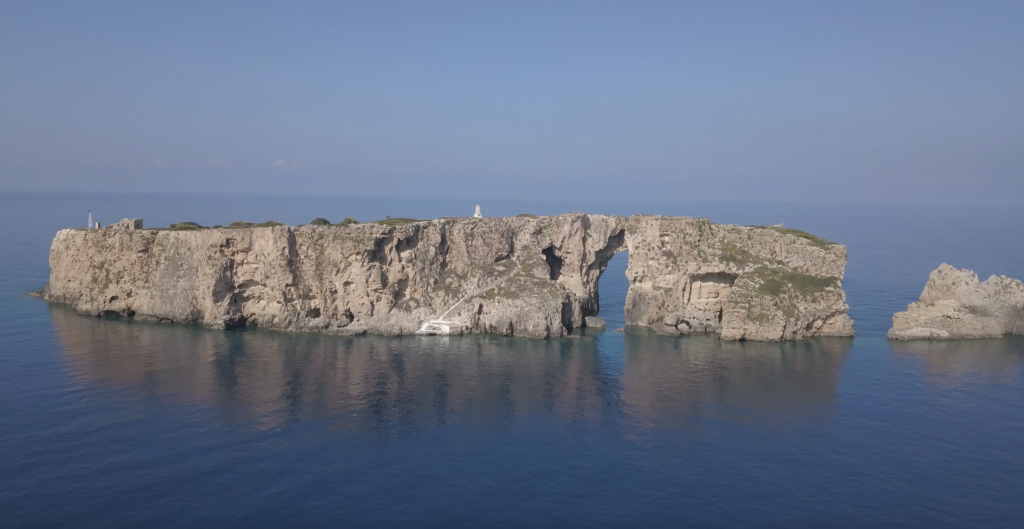
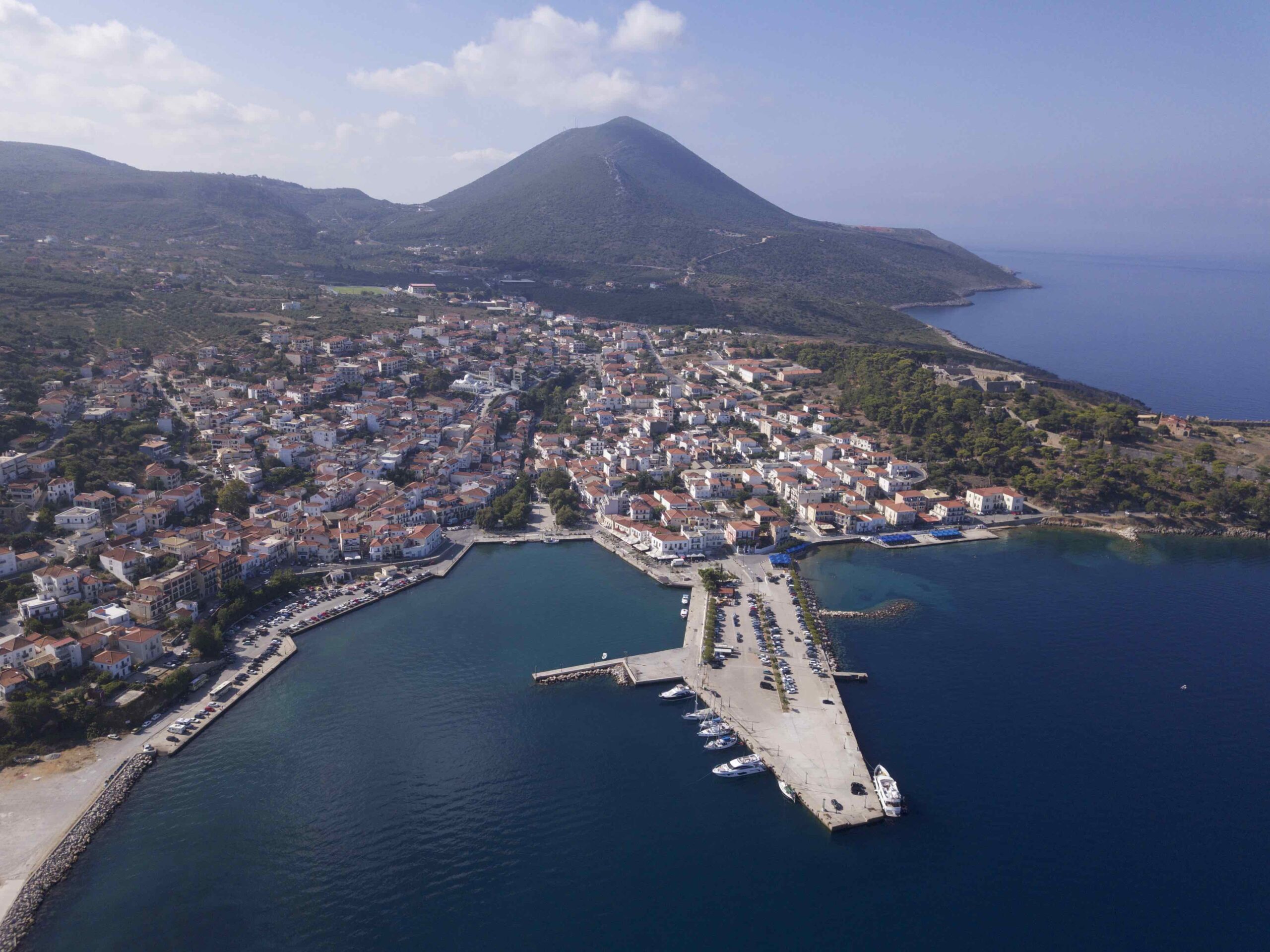
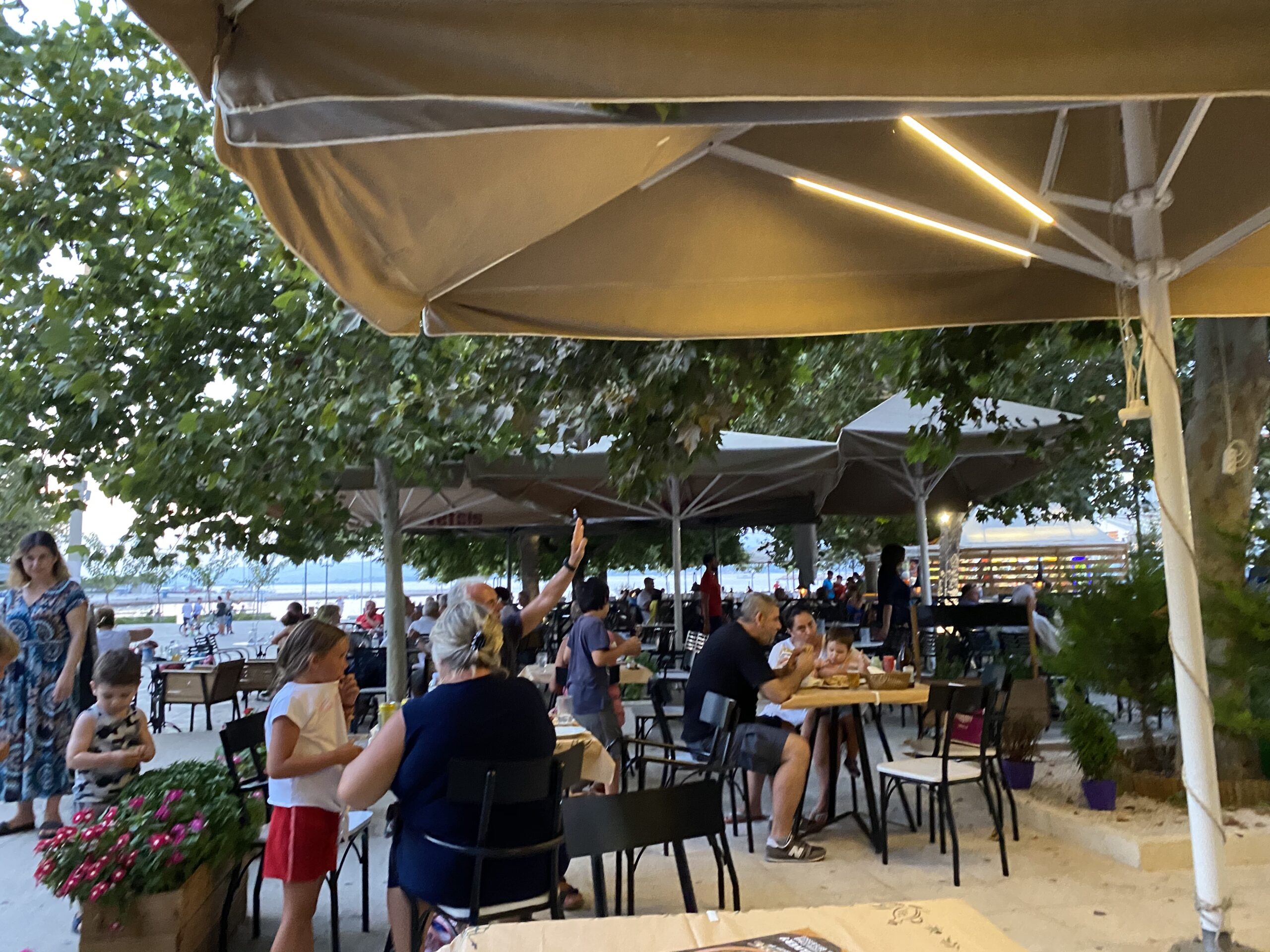
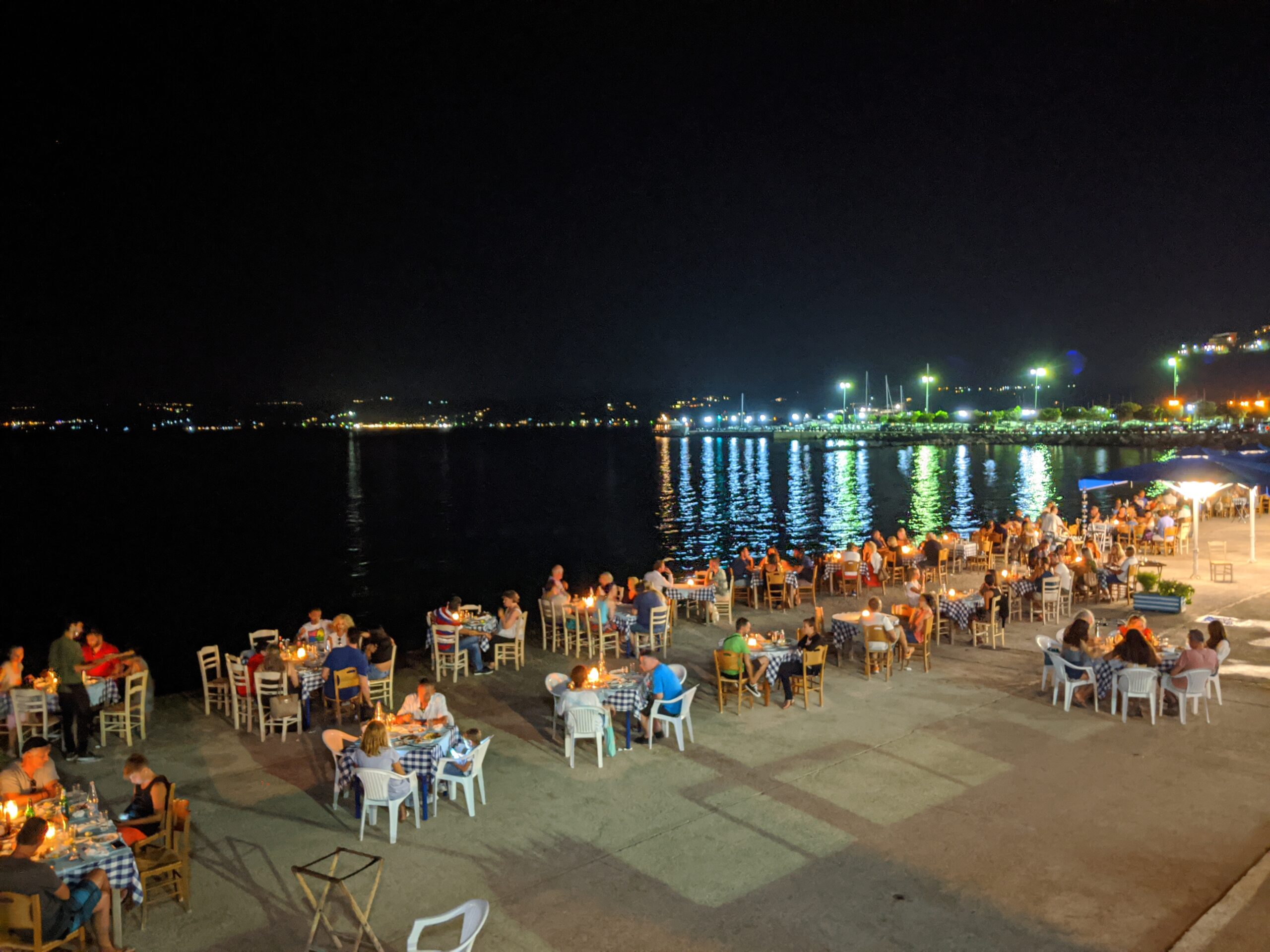


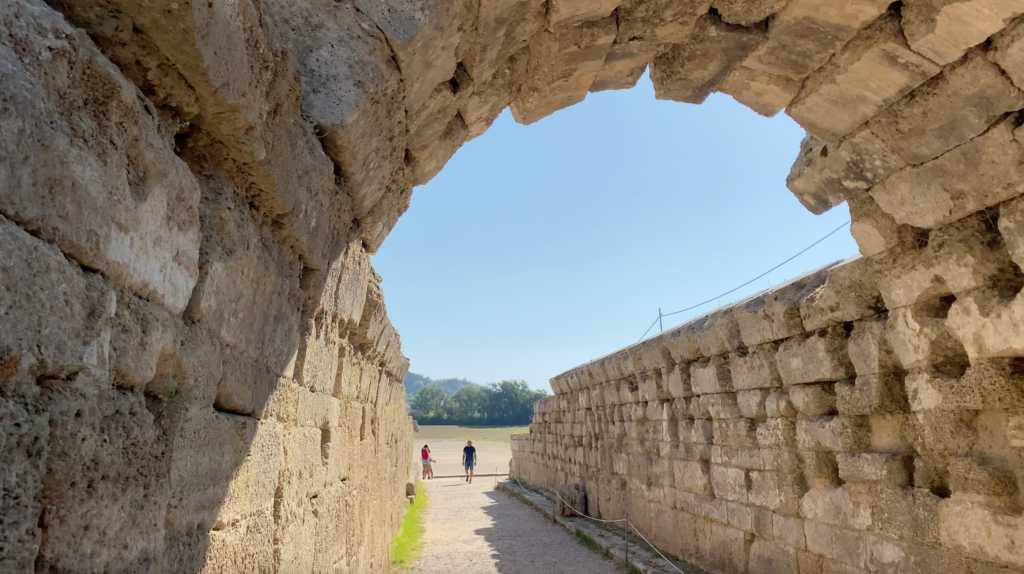

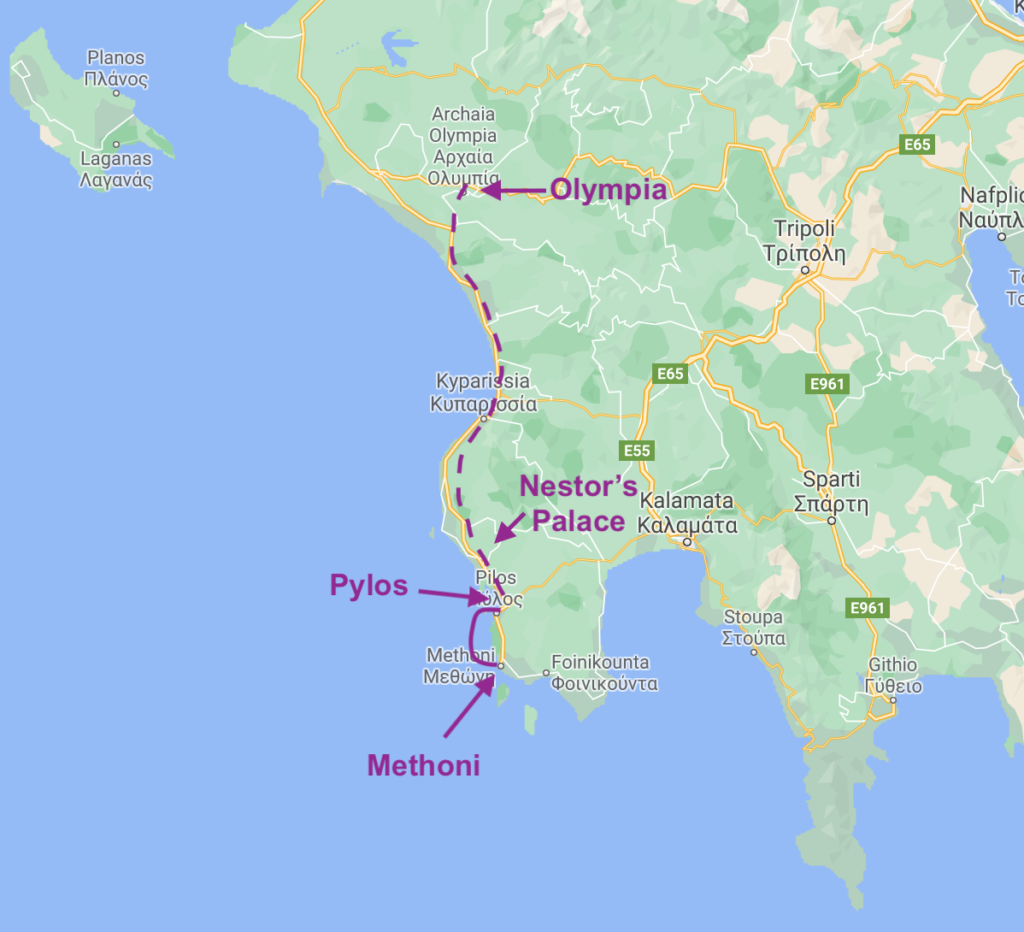

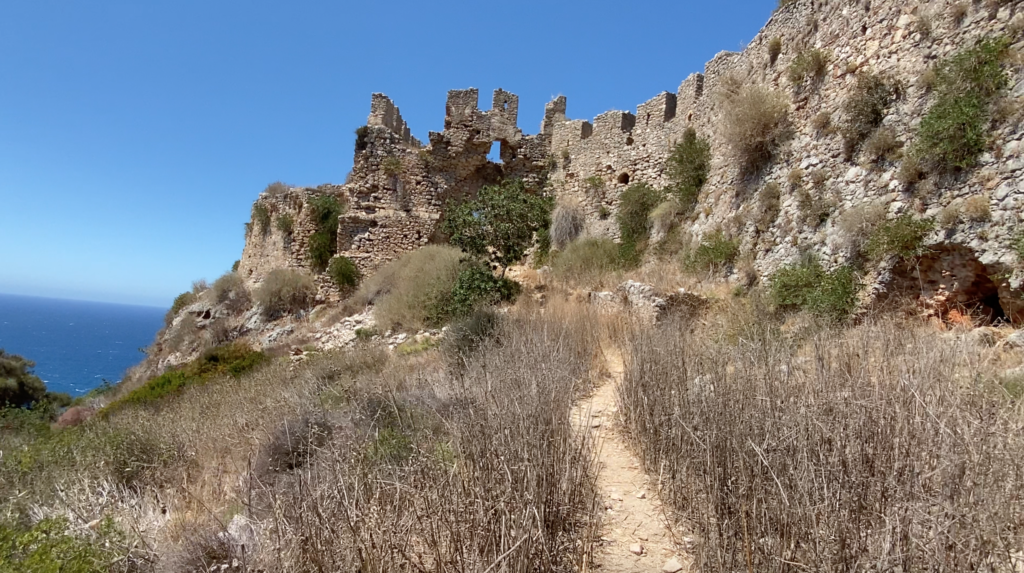
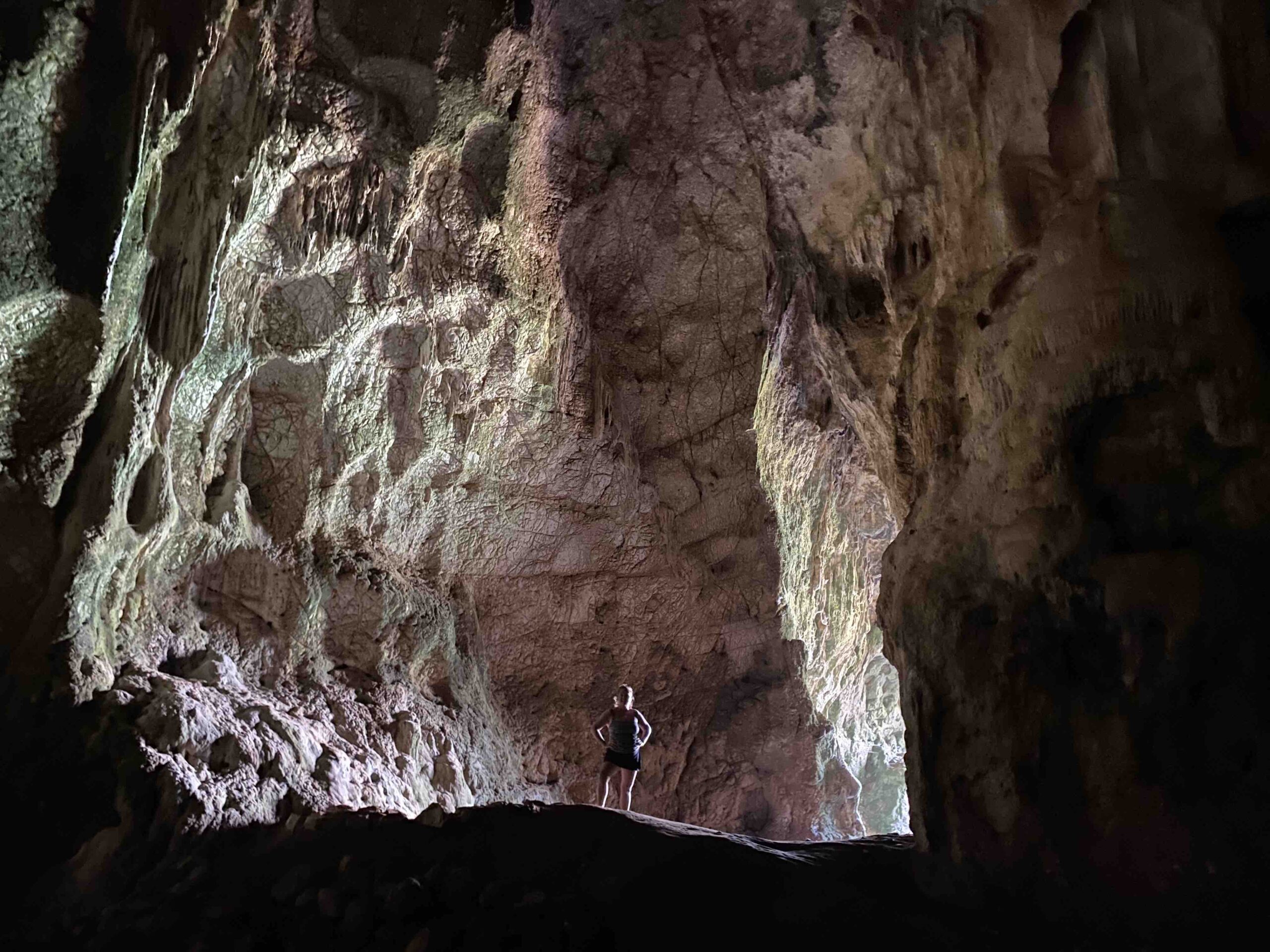
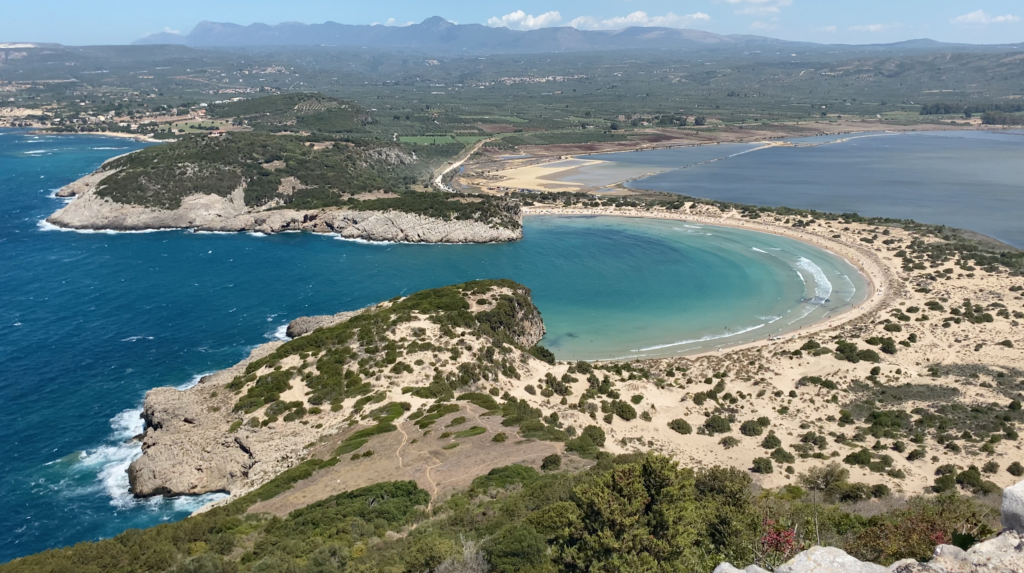
Enjoyed reading about your adventures. Ah to be young again.
Thanks Martin!
Sounds like some really lovely days. Joy would have hated that hike. In fact, she would have told me to on while she waited for me.
Thanks Tony, they were indeed some very special days… Hoping we can all get back in the flow soon. Take care!